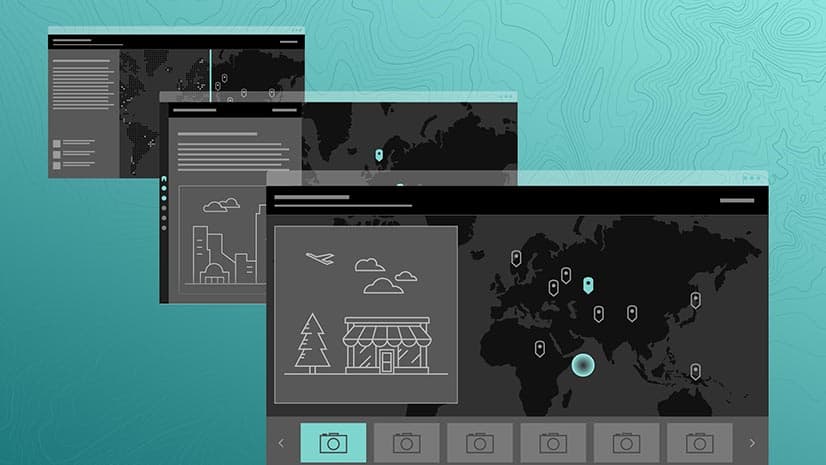![]() A recent blog described a new way to use groups to enable colleagues to update your maps and apps on ArcGIS Online. With the addition of this capability there are now three ways in which members can participate in collaborative publication and management of web maps, configurable web apps, and Story Maps. This post summarizes the ways to collaborate and provides examples that can help determine why and how you might use each of them.
A recent blog described a new way to use groups to enable colleagues to update your maps and apps on ArcGIS Online. With the addition of this capability there are now three ways in which members can participate in collaborative publication and management of web maps, configurable web apps, and Story Maps. This post summarizes the ways to collaborate and provides examples that can help determine why and how you might use each of them.
1) Administrators
Members that are in the core Administrator role have the ability to view and edit any item in the organization. With these privileges, administrators can help in situations where a critical change must be made immediately; for example, if a grammatical error or typo was found in a Story Map that has been released to the public an administrator can correct the change immediately.
Scenario: Administrator approval needed for publication
You work for a division of a large federal agency that has a strict approval process for sharing items with the public. As the Administrator you have disabled public sharing in the organizational settings so that Story Map authors may not share items directly with the public.
Authors submit their completed story maps to you for approval. Once approved, you share the app and any web maps and layers in the story with the public. You may make minor changes like fixing typos in the app before publishing.
2) Custom roles
There may be members of an organization who need the ability to modify any web app in the organization, but they should not have full administrative privileges. For these members an administrator can create a custom role that has the Content: Update privilege. This will grant members in this custom role the ability to edit the items and item details of any item in the organization, but they won’t be able to do other administrative actions like update security settings, change the organization home page, or send invitations to new members. Depending on the needs of your organization, this custom role might be thought of as an “Application Administrator,” a “Story Map Reviewer,” or a “Public Content Manager.”
You may also want to provide this role with privileges to Share with Groups, Organization, and Public so that members in this role can change the sharing of other’s items.
Scenario: Web App Administrator
You are a senior GIS technician for a medium-sized local government that is very active in deploying ArcGIS for Local Government apps. The administrator for your organization is part of the IT department and is not directly involved in day-to-day GIS operations. She has granted you the responsibility and ability to manage the GIS apps created in your organization.
You have a good team of three other GIS techs and trust them to publish apps directly to the public, but you spot check their work to ensure the apps works as expected and compliance with organizational standards. In rare cases when an app requires major changes you adjust the sharing so it is no longer shared with the public and communicate the required changes to the app publisher. For apps that need minor changes, you simply make the changes yourself.
3) Collaboration groups
Collaboration groups provide the most control when granting members the ability to update other members’ items. Collaboration groups can be created by administrators to support project-based workflows or team-based activities. A project might bring together a group of collaborators for a specific time period and the group might exist to support that project and then be deleted when the project ends. A team that works together often might have their own collaboration group or set of collaboration groups to support their content production activities.
This method of collaboration requires a bit more administrative overhead since the groups as well as the members and items associated with them must be managed. Short-lived project-based collaboration groups would require more administrative time to manage than longer-term team-based groups.
In order for others to edit certain aspects of Tour, Shortlist, or Crowdsource story maps in a collaboration group, the web map and feature service items (in addition to the app item) must also be shared into the collaboration group.
Scenario: Story Map production team
You work for a large corporation on a four-person team that produces story maps on a regular basis. The team is split among several offices in different time zones, but they communicate frequently and work together on the same stories.
Two members of the team focus on publishing layers and web maps and do most of the data management and cartographic design. The other two members do most of the writing and Story Map app configuration. Despite the specialization of the team members, all of the team members are familiar with how to create web maps, configure Story Map apps and manage items in ArcGIS Online.
Depending on production schedules any team member may be the one who shares the app with the public when it is finalized.
Since this team has a focused mission inside of a large organization, they do not need privileges to change other items in the organization. The best choice for supporting a collaborative workflow on this team would be collaboration groups.
For more information





Commenting is not enabled for this article.